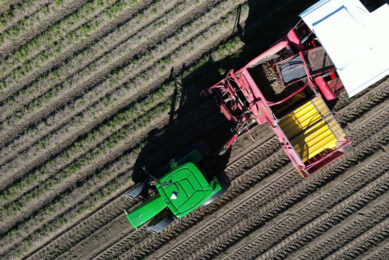Smart trap alerts growers to pest attack by text

A fully automatic insect pheromone trap can not only tell the difference between pests and beneficial insects, the smart pest trap also alerts farmers to attacks by text.
Researcher Nicolas Dauy at Cap2020 explains that the trap works by identifying the moth using its wingbeat frequency as compared against bees and other insects.
The smart trap then notifies farmers using the low-power, wide-area network when numbers exceed a set threshold – effectively providing a real-time alert. This is the same communications network used by smart meters and smart watches in France.
Prototype for tomato crops
Mr Dauy explains it was initially developed for capturing and counting tomato moths (Helicoverpa armigera). It is a major pest that can devastate crops, as the larvae dig into the plant and eat.
The pest also affects a wide range of other crops including salad and pulses. “The prototype worked really well in a tomato crop in the Rhone Valley.” Compared with manual pest traps, there was really good agreement on increases in pest numbers.
However, the automated trap offers greater accuracy as it can count every hour, allowing better timed treatments, Dauy explains.
Automated trap is more accurate
Manual traps are often monitored weekly or fortnightly and you don’t know when the moth entered the trap in that period. Therefore, with the hourly information, you can more accurately model its life cycle.
Treatment is specific to life cycle. Farmers need to know when the pest is flying and laying eggs to prevent the caterpillars entering the fruit.
Being able to more accurately predict its life cycle means better-timed treatments, Mr Dauy says.
See also: Spray adjuvant enhances virus control in spuds
Temperature and humidity sensors
The addition of optional integrated temperature and humidity sensors on the smart pest trap adds even more accuracy to the life cycle modelling. Alternatively, farmers can use information from a network of weather stations.
This is the first season the pest traps will be commercially available. Farmers can hire them for a season at a cost of €15.
Looking to the future, Mr Dauy has been looking at other crops such as maize and believes it could be developed for other pests.
Join 17,000+ subscribers
Subscribe to our newsletter to stay updated about all the need-to-know content in the agricultural sector, two times a week.



